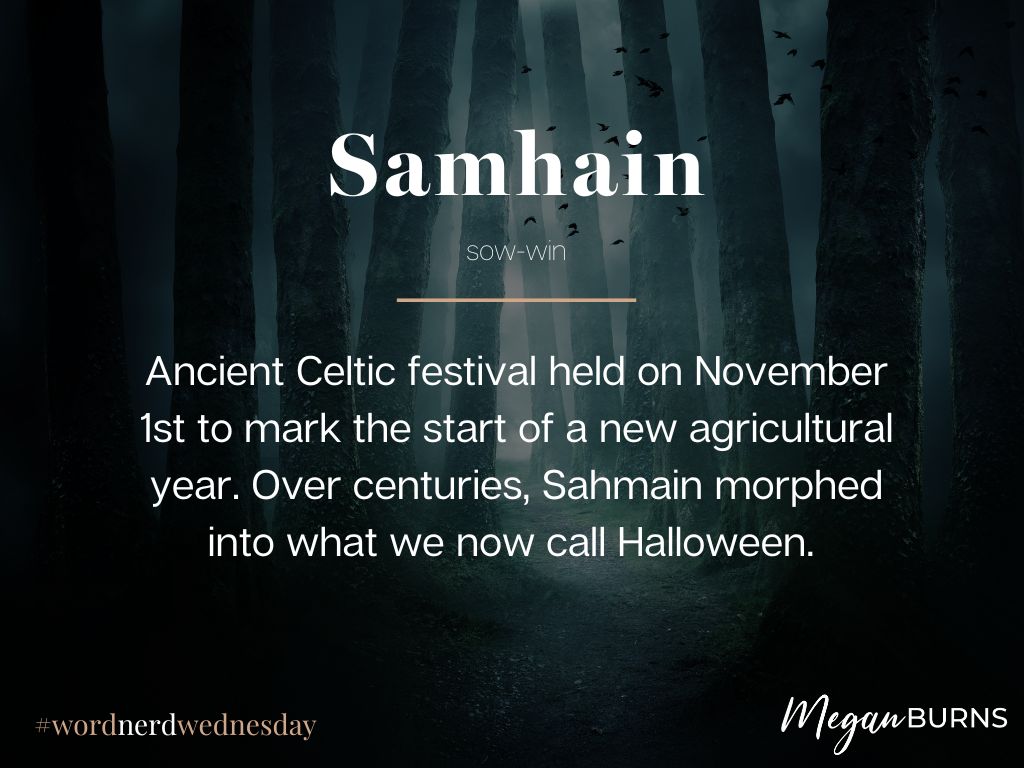Tomorrow is Halloween. It’s not my favorite holiday, to be honest. I like candy, costumes, and carved pumpkins, sure. Ghosts, skeletons, and Grim Reapers? Scaring the heebeegeebees out of yourself and others? It’s not my idea of a good time.
Where did these odd customs come from, I wondered?
They trace back to an ancient Celtic festival called “Samhain” (pronounced “sow-win”), which means “summer’s end” in old Gaelic.
Celebrated on November 1, Samhain marked the end of the harvest and, thus, the end of the agricultural year. People gave thanks for whatever they had reaped and asked the gods for safe passage through the cold winter to come.
Bonfires were common, adding light and warmth as darkness fell earlier each day. Families used hollowed-out turnips to carry the ceremonial flame home to bless their own hearths, a practice some think led to our modern jack-o-lantern. Irish and Scottish immigrants to the US wanted to keep the flaming gourds going but found pumpkins were cheaper than turnips in 19th-century America.
What about the spooky stuff?
Ancient Celts believed that the barrier between the human and spirit world was the thinnest on Samhain. Some of the spirits that came to visit were good – the souls of cherished ancestors. Most, however, were not.
To protect themselves from these ancient Boogeymen, people donned masks and costumes in hopes of tricking spirits into leaving them alone. Others left sweet treats out to appease any phantoms that passed by.
More mischievous members of society used Samhain as an excuse to play pranks on those around them, blaming fairies for the trouble. By the 20th century, teen mischief had morphed into serious vandalism – even violence – in growing US cities.
Gangs of teens and tweens would demand sweets or money from neighbors, threatening to damage property if they didn’t come through. To stop the spiral, some leaders tried to ban Halloween. It didn’t work, but they managed to shift the focus to younger kids. As more people moved to cities, parents started taking their kids around to ask for candy in a lighthearted, polite way.
By 1930, a national magazine published articles on what we now think of as trick-or-treating. By the end of World War II, it had become the new norm. In 2024, Americans will spend roughly $12 billion on Halloween. Over $3 billion of that will go towards candy alone.
If spirits do come through more easily on Halloween, I want to find some of my ancient Celtic ancestors and ask what they think of the way things are today.


